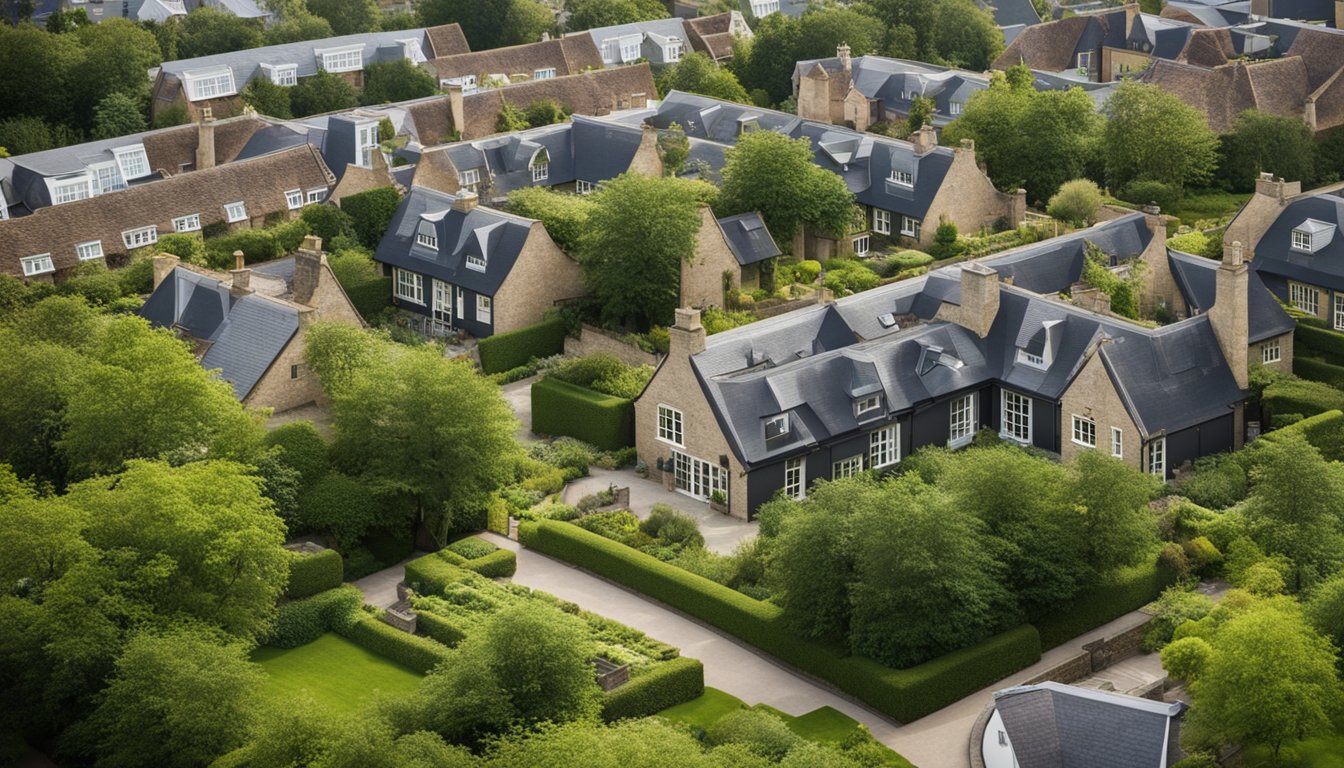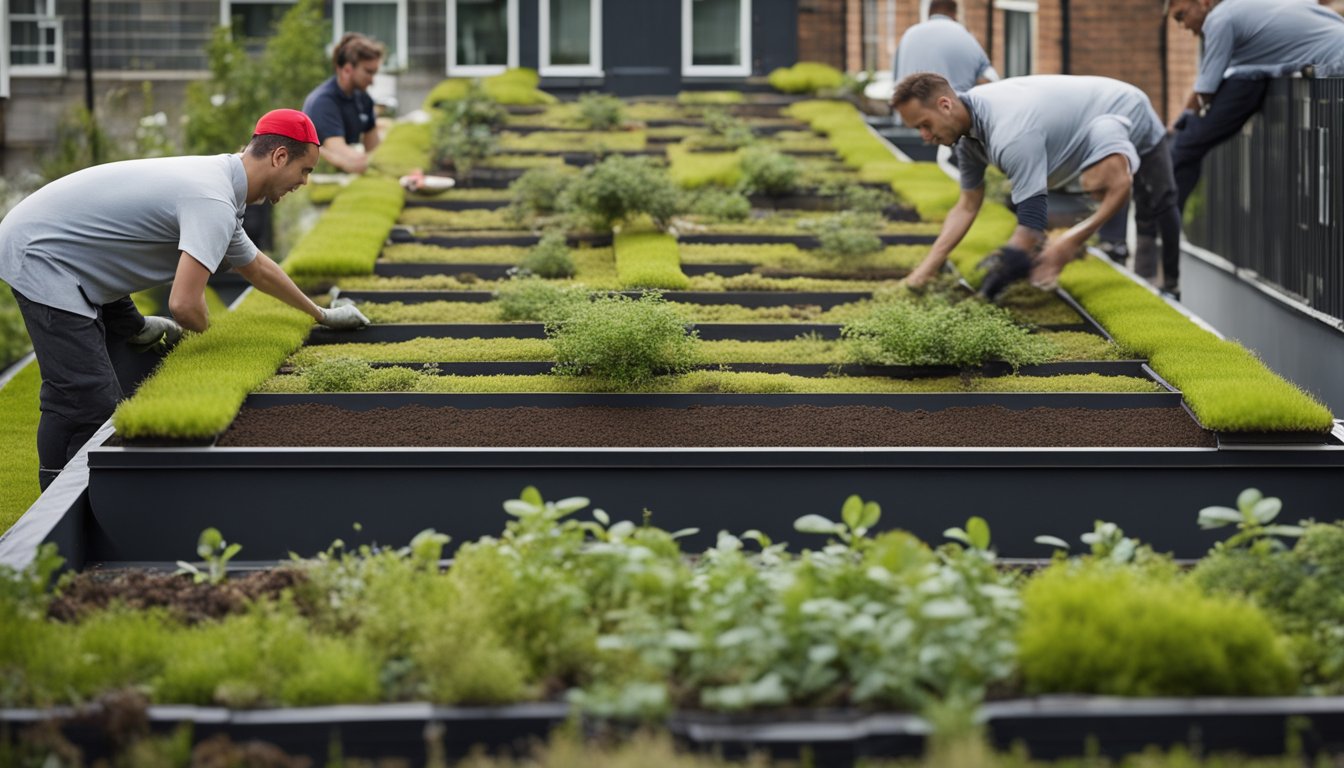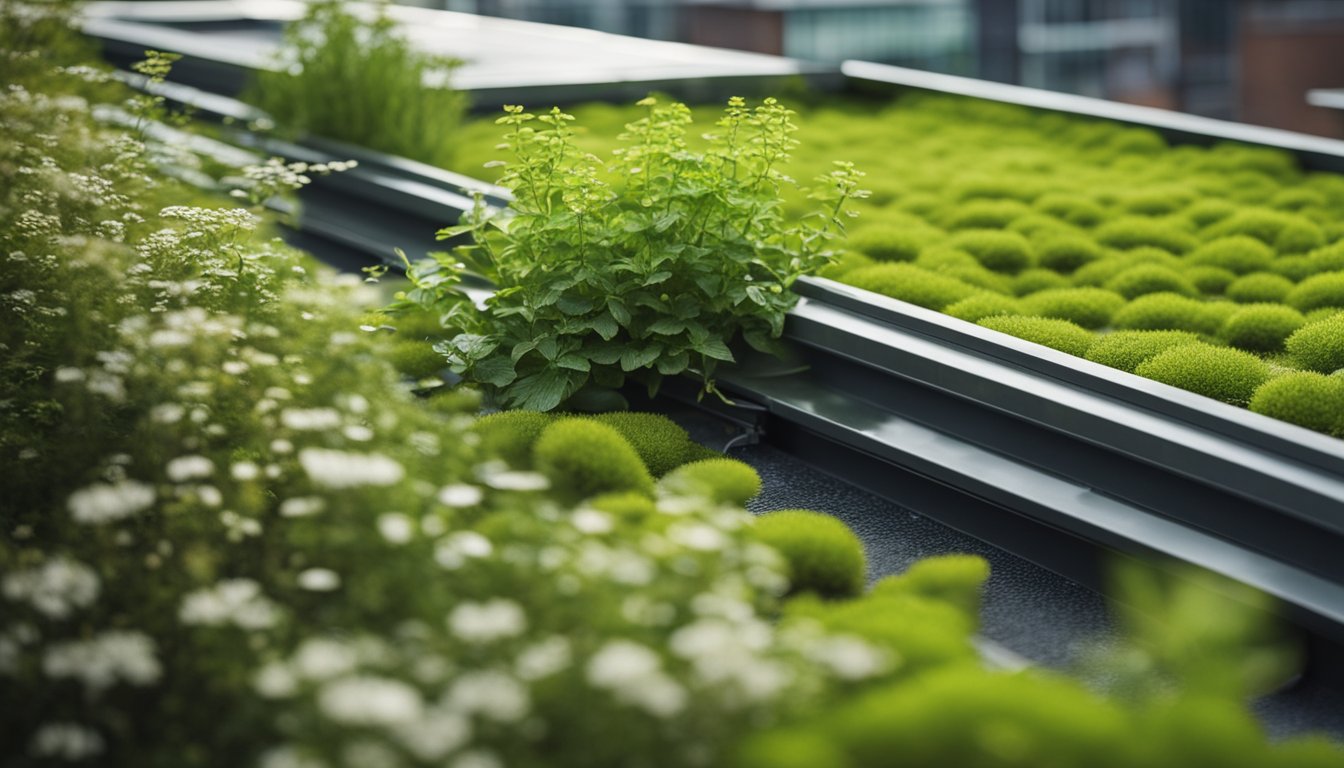Late updated: 10 Aug 2024 15:08
Written by: Oliver Bennett
Eco-Friendly Benefits Of Green Roofs In The UK: Enhancing Urban Sustainability
Green roofs have become a modern-day marvel, especially in urban areas across the UK. As cities grow denser, the need for sustainable and eco-friendly solutions becomes more pressing. Green roofs, with their lush vegetation covering rooftops, introduce a myriad of benefits that extend far beyond aesthetics. One of the key benefits of green roofs is their ability to significantly improve air quality by filtering pollutants and releasing oxygen.

Additionally, green roofs offer remarkable advantages in energy efficiency. By providing natural insulation, they reduce the need for artificial heating and cooling, which can lead to substantial savings on energy bills. Not only do green roofs contribute to our immediate environment, but they also play a crucial role in urban sustainability by providing habitats for local wildlife.
Despite the clear benefits, the design and upkeep of green roofs require careful planning and regular maintenance. It's essential to approach this with a well-thought-out strategy to ensure long-term gains. This blog post explores these various facets, giving you a comprehensive understanding of why green roofs are an invaluable investment for a sustainable future.
Key Takeaways
- Green roofs improve air quality by filtering pollutants.
- They offer energy efficiency through natural insulation.
- Proper design and maintenance are crucial for long-term benefits.
Environmental and Economic Advantages of Green Roofs
Green roofs offer significant benefits in both environmental and economic terms. They improve air quality and regulate temperature, support biodiversity and ecosystems, and manage stormwater efficiently, which reduces urban flooding risk.
Air Quality and Temperature Regulation
Green roofs play a crucial role in enhancing urban air quality. Plants on green roofs absorb pollutants such as nitrogen dioxide and particulate matter, which helps purify the air.
Additionally, green roofs contribute to temperature regulation. They reduce the urban heat island effect by absorbing less heat compared to traditional roofs. This insulation leads to lower energy consumption in buildings, which translates to reduced energy costs and lower carbon footprints. During summer, green roofs can reduce indoor temperatures by 1-5°C, decreasing the need for air conditioning.
Biodiversity and Ecosystem Support
Biodiversity and ecosystem support are critical benefits of green roofs. They provide habitat for various birds, insects, and pollinators, contributing to urban wildlife conservation.
In densely populated cities, green roofs offer essential green spaces that encourage natural habitats to flourish. Different GR designs offer varying levels of support for flora and fauna, promoting ecological balance within urban settings. Sustainable materials and substrate layers in green roofs also enhance this biodiversity, enabling a vibrant urban ecosystem.
Stormwater Management and Water Quality
Effective stormwater management is another significant advantage of green roofs. They absorb rainfall, reducing the volume of water that reaches urban drainage systems. This absorption helps prevent flooding and manages water runoff more efficiently.
Green roofs also improve water quality by filtering rainwater. The plants and substrates remove pollutants from the water, which reduces the load on municipal water treatment facilities. This not only helps in maintaining cleaner urban water bodies but also supports sustainable water management practices.
Design, Installation, and Upkeep of Green Roofs

When considering green roofs, it is essential to understand their design, installation process, and maintenance requirements. Various factors impact the success and longevity of these eco-friendly structures.
Types and Components of Green Roofs
Green roofs come in various types, including extensive, intensive, and semi-extensive. Extensive green roofs feature shallow substrates (100-150mm) and are ideal for low-growing plants like sedum and wildflowers. They are lightweight and require minimal maintenance. Intensive green roofs have deeper substrates (200mm+) and support a diverse range of vegetation, including grasses, shrubs, and even small trees. They require regular upkeep and are heavier, needing robust structural support.
Key components include a waterproofing layer, root barrier, drainage system, and growing medium (substrate). Each layer has a specific function, from preventing water leakage to supporting plant life.
Cost and Maintenance Considerations
The initial investment in a green roof can vary based on type and size. Extensive green roofs are generally more affordable, ranging from £50 to £100 per square metre. Intensive green roofs, being more complex, can cost between £150 to £400 per square metre. Professional installation is crucial to ensure proper waterproofing and structural integrity.
Ongoing maintenance includes regular inspections, weeding, and watering, especially during dry spells. Intensive green roofs require more frequent care compared to extensive ones. However, both types contribute to long-term savings by reducing energy consumption through improved insulation.
Advantages in Urban Areas
Green roofs offer significant benefits in urban settings. They enhance urban drainage systems by retaining rainfall, reducing the risk of flooding. Additionally, they help combat the urban heat island effect by cooling the air through evapotranspiration and shading buildings, leading to lower energy consumption for cooling.
The vegetation on green roofs also acts as a natural air filter, absorbing pollutants and improving air quality. Moreover, they can provide noise reduction, creating quieter and more pleasant environments. Finally, green roofs create valuable green spaces for urban wildlife, promoting biodiversity.
Frequently Asked Questions

Installing green roofs offers numerous ecological and economic benefits. They contribute to urban sustainability, mitigate environmental challenges, and enhance biodiversity.
What are the ecological advantages of installing green roofs in urban areas?
Green roofs act as natural air filters, absorbing pollutants and releasing oxygen through photosynthesis.
They also help reduce storm-water runoff, lowering the risk of flooding in urban drainage systems.
In what ways can green roofs contribute to economic sustainability?
By insulating roofs, green roofs reduce energy demands for heating in winter and cooling in summer.
They extend the lifespan of roofing membranes by reducing heat fluctuations and UV exposure, leading to lower maintenance costs.
How can green roofs mitigate environmental issues?
Green roofs can retain up to 80% of rainfall, reducing stress on urban drainage systems.
They play a significant role in combatting urban heat island effects by cooling the surrounding air.
What are the primary reasons for the growing popularity of green roofs in the UK?
The increasing awareness of climate change and the need for sustainable urban planning are key drivers.
Additionally, green roofs aesthetically enhance buildings, making urban spaces more visually pleasing.
Can green roofs play a significant role in urban biodiversity enhancement?
Yes, green roofs provide habitat for various plant and animal species, thus promoting urban biodiversity.
They create green corridors in cities, aiding the movement and survival of wildlife.
What are the potential downsides to implementing green roofs in urban settings?
Initial installation costs can be high, and structural assessments are necessary to support the extra weight.
Maintenance can also be time-consuming, requiring regular inspections and upkeep to ensure plant health and structural integrity.
